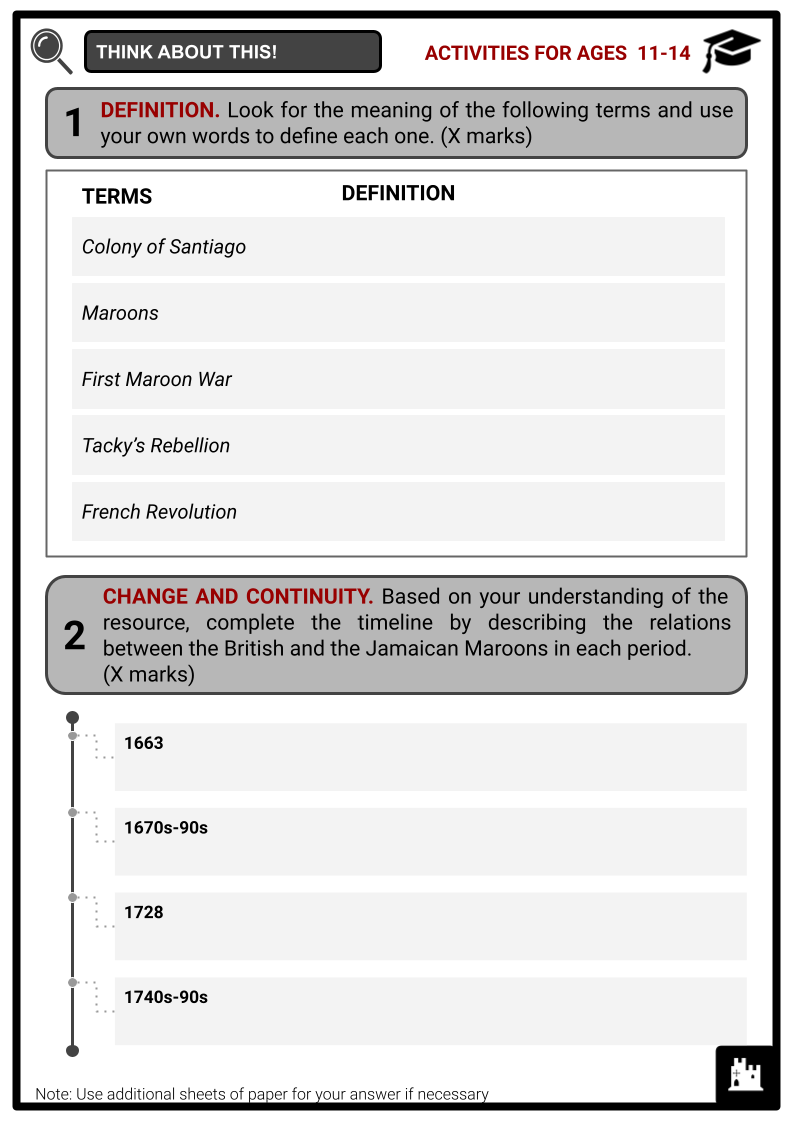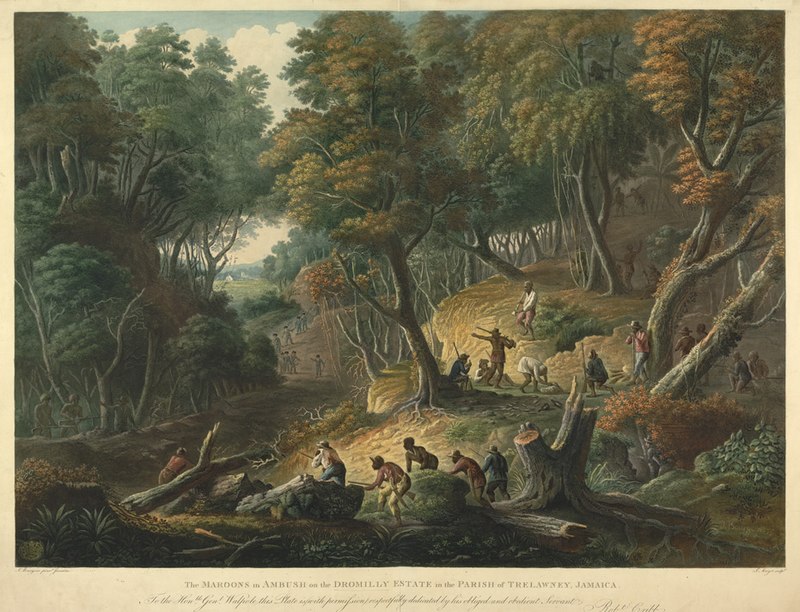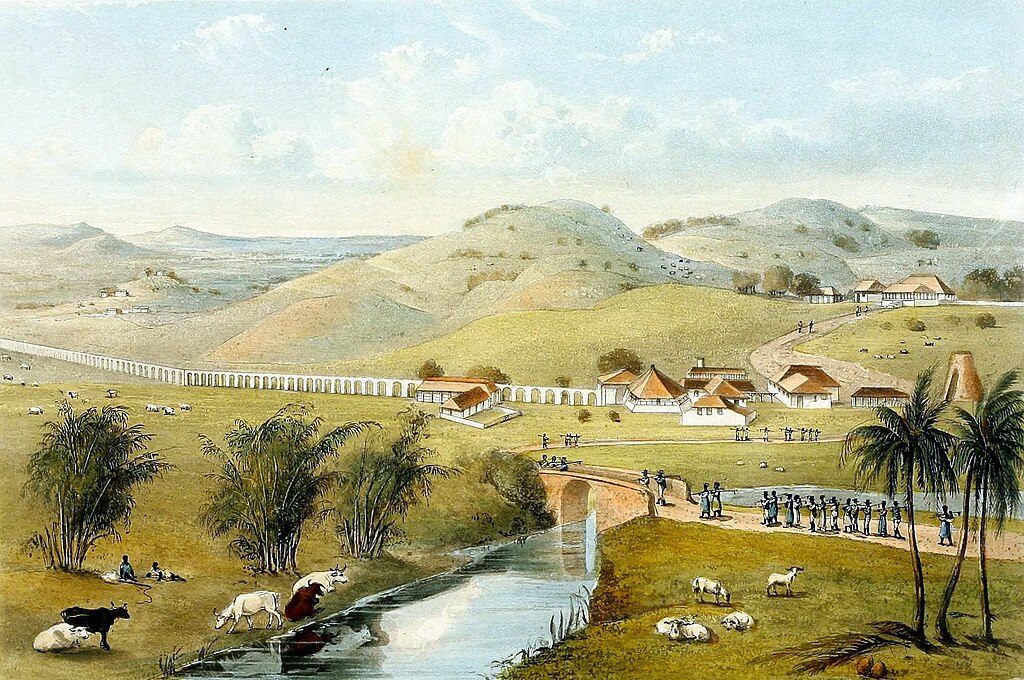Second Maroon War Worksheets
Do you want to save dozens of hours in time? Get your evenings and weekends back? Be able to teach about the Second Maroon War to your students?
Our worksheet bundle includes a fact file and printable worksheets and student activities. Perfect for both the classroom and homeschooling!
Resource Examples
Click any of the example images below to view a larger version.
Fact File


Student Activities




Summary
- Earlier conflicts between the British and the Maroons
- Outbreak of the Second Maroon War
- Aftermath of the war
Key Facts And Information
Let’s find out more about the Second Maroon War!
Earlier conflicts between the British settlers and the Jamaican Maroons were settled by a number of peace treaties signed in 1739-40. A steady coexistence between the two lasted for five decades until the Second Maroon War broke out in 1795. The Maroons of Trelawny Town, who felt mistreated by the British, waged a guerrilla war. The destructive and costly war culminated in the surrender of hundreds of Trelawny Town Maroons. However, the British government refused to honour the peace treaty signed with the Maroons, and instead, deported them to Nova Scotia and later to Sierra Leone.

Earlier relations between the British and the Maroons
- Jamaica, known then as the Colony of Santiago, was under Spanish rule from 1494 until the mid-17th century. The Spanish enslaved the indigenous peoples in the region, who soon perished due to exploitations and diseases introduced by the European colonists. Later, they imported enslaved Africans to the Caribbean island to supplement their diminishing labour force.
- The enslaved Africans during the long span of Spanish rule may have been the early Jamaican Maroons, who managed to escape into the mountainous interior of the island and set up independent black communities.
- The name ‘Maroon’, given to the Africans, comes from the Spanish word cimarrόn, which meant ‘wild’ or ‘untamed’.
- In 1654, England launched the Western Design expedition with the intention to acquire Spain’s colonies in the Caribbean during the Anglo-Spanish War.
- The invasion of Jamaica occurred the following year after the English failed to take over the Spanish fort at Santo Domingo, Hispaniola.
- The poorly fortified Colony of Santiago then became the focus of the English force and was seized.
- Terms were soon set to annex the island to England.
- The Spanish colonists fled when the English ordered them to leave the colony immediately. Meanwhile, many enslaved Africans escaped and liberated themselves, becoming Maroons.
What was the initial relationship between the English and the Maroons?
-
- The Spanish allied with the Maroons to thwart English efforts to institute power over the interior and to retake the island for Spain.
- In fact, in the first decade of English rule in Jamaica, different Maroon groups fought on behalf of the Spanish.
- The Maroons retained control of a substantial portion of the island, particularly in the rough interior, which the English failed to conquer.
- When it grew apparent that the English were to hold their conquest of Jamaica, a Maroon group allied with and aided the English on a raid against the Spanish in 1660.
- This led to the signing of the first Maroon treaty in 1663, granting the Maroons, who assisted the English, land on the same terms as the English settlers.
- However, the other Maroon groups failed to be subdued by the English colonial authorities.
- Later in the 1670s and 1680s, three campaigns were organised against the Maroons with some success, which prompted the Maroons to withdraw further inland in order to stay out of reach of the English colonial authorities.
- As the English settled in Jamaica, the European population increased, along with the population of enslaved Africans.
- Several major slave uprisings broke out in the late 17th century, perhaps the most notable of which was the rebellion at Sutton’s farm in Clarendon Parish in 1690, involving more than 400 enslaved Africans.
- This led to many enslaved freeing themselves, hence a stable and more organised Maroon group formed on the island.
- The English continued to order raids on the Maroon settlements, which were regarded as an impediment to English development of the interior. This achieved limited success.
- Whilst the Maroons generally sought to distance themselves from the European colonists, they took the offensive by pillaging plantations, and tormenting planters until they became concerned about an uprising. This contributed to the outbreak of the First Maroon War.
First Maroon War
- In 1728, the British, disturbed by plantation raiding, despatched more troops to Jamaica, shifting the balance of power away from the Maroons. In the same year, the British sent a new governor to Jamaica, Major-General Robert Hunter, and the conflict with the Maroons worsened under his administration.
- Conflict between the British colonial authorities and the Maroons under the leadership of Nanny, Quao, Cudjoe and Accompong lasted from 1728 until 1740.
- With their remarkable skills in guerrilla warfare, the Maroons launched a number of incursions into planter estates.
- By 1739–40, the colonial government realised that it could not suppress the Maroons. After years of fighting, peace treaties were signed between the two.
- Britain granted the Maroons land rights and political autonomy. In exchange, the Maroons would defend the colonial government in Jamaica against foreign invasion and assist in the arrest and return of runaway enslaved people.
- Additionally, a British superintendent was to be assigned to reside in each Maroon town.
- These peace treaties compelled the Maroons to support the institution of slavery.
- The treaties were not acknowledged by all the Maroons. In the succeeding years, rebellions persisted in Maroon communities, especially after the British superintendents took charge of the Maroon towns.
- The rebellions, however, were suppressed, and some of the rebellious Maroons were displaced.
- After 1739, the Maroon population continuously grew.
- The Maroons were located in five main towns, such as Accompong, Trelawny Town, Moore Town, Scott’s Hall and Charles Town.
- In 1760, another conflict known as Tacky’s Rebellion erupted. It was participated in by the enslaved Akan people and other ethnic groups from Ghana who aimed to take control of the island and establish a Black independent nation.

Tacky’s Rebellion
- The colonial government asked their Maroon allies to honour the terms of the treaties and aid them in crushing the uprising.
- Several Maroons were mobilised and attacked the rebels, ultimately killing the leader of the rebellion.
- Resistance persisted for nearly a year until the remaining followers of the rebellion were either killed or captured.
- Following the 1760 rebellion, numerous Maroon officers began a career out of hunting runaways for the colonial authorities.
- The runaways organised informal Maroon communities, similar to the earlier official Maroon communities. Whilst some runaways were successfully captured or killed by the Maroons, the runaway Maroon communities persevered under the guidance of new leaders.
- After Tacky’s Rebellion, the British governor assigned a separate superintendent for each of the five Maroon towns, who were to report to the Superintendent-General. Disagreement over the appointment of a British official to a Maroon town sparked another war in the 1790s.
Outbreak of the Second Maroon War
- In the early 1790s, the British planters in Jamaica grew concerned about the excesses of the French Revolution and the slave revolt that had just begun in the neighbouring Saint-Domingue. Moreover, there emerged an increasing desire for land among the growing Maroon communities, which coincided with several more immediate causes of grievances among the Trelawny Town Maroons.
- The Trelawny Town Maroons were dissatisfied with the 1739 peace treaty, believing they were mistreated under its terms. They also felt uneasy with the growing White dominance in their town.
- The tipping point was reached in July 1795, when two Maroons, one named Peter Campbell, were convicted of stealing pigs and ordered by the colonial authorities to be flogged by the enslaved.
- The Trelawny Town Maroons, who had been hunting runaways for the colonial authorities, were outraged by both the conviction and the punishment. They believed that the trial and punishment should have been conducted within their own community.
- The Maroon leaders met with the British authorities to present their grievances.
- However, the British authorities took the Maroon leaders as prisoners under orders from the new governor of Jamaica, Alexander Lindsay, 6th Earl of Balcarres.
- Balcarres mistakenly believed that the Maroons had been influenced by the French with their revolutionary spirit. He ordered his forces under the command of Colonel William Fitch to march on Trelawny Town to demand the Maroons’ immediate submission.
- When it became apparent that war was inevitable, the Maroon leader Montague James was then released by the British to convince the Maroon warriors to surrender. Instead, he told his men how he had been mistreated, further provoking them to fight,
- The mishandling of the dispute that could have been resolved without conflict led to fighting in mid-August. This brought an end to five decades of steady coexistence between the British planters and various Maroon communities.
Timeline of the conflict
- The Trelawny Town Maroons led by Montague James refused to surrender and decided to take on the British. They carried out a campaign of guerrilla warfare in small bands under several captains, destroying British property and sugar estates and clashing with the colonial militia.
- In the early phase of the conflict, Fitch and the colonial forces suffered significantly higher casualties than the Maroons of Trelawny Town.
- Hundreds of runaways secured their freedom by fighting alongside Trelawny Town. Meanwhile, the Maroon communities of Moore Town, Charles Town and Scott’s Hall maintained their neutrality and did not despatch any assistance to the Trelawny Town. On the other hand, Accompong took up arms on behalf of the colonial authorities.
- Whilst the mobilised British troops significantly outnumbered the Maroons, the mountainous topography was ideal for the latter’s guerrilla warfare. Fitch employed Accompong Maroon warriors to attack Trelawny Town. However, they were soon ambushed, and Fitch himself was killed along with many militia soldiers and Accompong trackers.
- A new general, George Walpole, was appointed by Balcarres. More setbacks were initially suffered by the colonial forces under Walpole.
- During the drought months, the Maroons of Trelawny Town failed to maintain their guerrilla campaign. Around this time, Walpole employed a scorched-earth policy, cutting off all Maroon provision grounds. Moreover, Balcarres imported some one hundred hunting dogs and their handlers from Cuba.
- Walpole sued for peace and tried to persuade Montague James and his lieutenants to come to terms. By this time, the Maroons had difficulty getting access to basic resources, and the importation of hunting dogs convinced them to accept Walpole’s overtures for peace.
- In December, the Maroons surrendered, resulting in the signing of a treaty between Walpole and the Maroon leaders, under which the Maroons would beg on their knees for the king’s forgiveness, return all the runaways, and be moved elsewhere in Jamaica. Balcarres ratified this agreement, but only allowed a few days for the Maroons to present themselves to beg forgiveness.
- Whilst some Maroons surrendered immediately, the majority of them, who remained distrustful of British intentions, did not yield until mid-March 1796.
Aftermath of the war
- The conflict proved too costly to the island and resulted in considerable damage to estates and plantations. Despite the surrender of hundreds of Maroons of Trelawny Town, Balcarres refused to hold his end of the bargain and reversed Walpole’s promise to the Maroons. He immediately arranged for the deportation of more than 500 Trelawny Town Maroons to Nova Scotia. Walpole disapproved the governor’s actions, while the Secretary of War supported the deportation.
- About 58 Maroons managed to avoid deportation and joined the other Maroon communities.
- Meanwhile, 550 Maroons were relocated to Halifax, Nova Scotia, where they were initially received as labourers. They were later forced to convert to Christianity and experienced exploitation.
- Dissatisfied with the conditions of their exile in Nova Scotia, they regularly requested the British government for their relocation to another colony.
- This was eventually granted in 1800, and the Trelawny Maroons were transported to the new British colony of Sierra Leone.
- The Maroons joined the African-American founders who set up the Colony of Sierra Leone and the settlement of Freetown.
- Moreover, they emerged as prominent members of the colony and contributed to the development of its culture.
- The situation of the Trelawny Maroon in Sierra Leone later soured, and they requested the British government for their return to Jamaica several times. These were rejected by the British.
- Back in Jamaica, the colonial authorities eradicated the evidence of the Maroon settlement of Trelawny Town and constructed military fortifications. Trelawny Town was also renamed as Maroon Town. Following the abolition of slavery in 1838, the colonial authorities imported labourers from Sierra Leone, among them were scores of Trelawny Town Maroons who established themselves in nearby Flagstaff.
Image Sources
- https://upload.wikimedia.org/wikipedia/commons/thumb/1/16/The_Maroons_In_Ambush_On_The_Dromilly_Estate_In_The_Parish_Of_Trelawney%2C_Jamaica_in_1795.jpg/800px-The_Maroons_In_Ambush_On_The_Dromilly_Estate_In_The_Parish_Of_Trelawney%2C_Jamaica_in_1795.jpg
- https://upload.wikimedia.org/wikipedia/commons/thumb/3/34/Hakewill%2C_A_Picturesque_Tour_of_the_Island_of_Jamaica%2C_Plate_12.jpg/1024px-Hakewill%2C_A_Picturesque_Tour_of_the_Island_of_Jamaica%2C_Plate_12.jpg
Frequently Asked Questions
- What was the Second Maroon War?
The Second Maroon War, also known as the Windward Maroon War, occurred in Jamaica from 1795 to 1796. It involved the British colonial forces and the Windward Maroons.
- Why did the Second Maroon War occur?
The war was sparked by tensions between the British colonial authorities and the Windward Maroons over land rights, freedom, and autonomy. The Maroons resisted British attempts to encroach upon their territories and control their communities.
- Who were the Windward Maroons?
The Windward Maroons were descendants of enslaved Africans who had escaped from plantations in Jamaica during the 17th and 18th centuries. They established independent communities in the island's mountainous regions, living in a semi-autonomous fashion.
